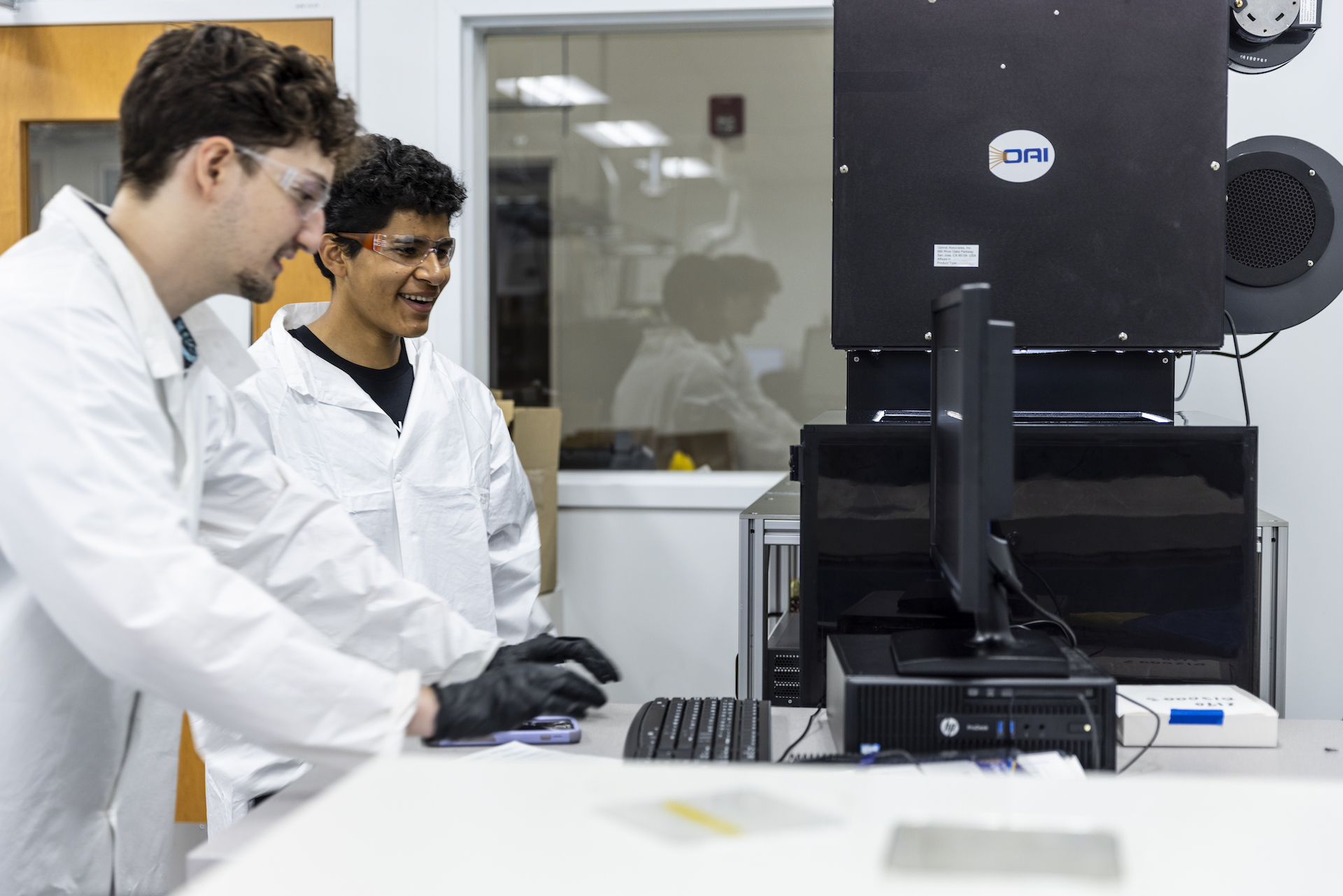Disclaimer: This webpage is intended to serve as a guide to common questions about STEM graduate school programs. This resource was created by Reagan Beers, a doctoral student in Molecular Engineering at the University of Washington and a 2024–25 CEI Graduate Fellow. The answers to these questions are based on her own experiences as a doctoral student at the UW, and may not be reflective of every graduate student, discipline, or institution. Please do your own research before applying for any educational program.
“As part of my CEI Graduate Fellowship, I created this STEM Graduate School FAQ page aimed at community college students/transfers. As a former community college student myself, I never interacted with a graduate student until I transferred to a 4-year university because I didn’t have TAs (teaching assistants) or access to academic research labs. While I am now a successful, well-adjusted graduate student, having information about graduate school earlier in my career would have streamlined my educational path. To better understand my audience and create the most helpful web page, I surveyed 26 current and past community college students about what they want to know about graduate school. Below are my answers to the most commonly asked questions on my survey and information I wish I knew before pursuing a graduate degree.”
FAQs
What is graduate school?
Graduate school comes after a four-year bachelor’s degree and offers more advanced degrees in a specialized discipline than a bachelor’s degree. The most common graduate degrees are a master’s (M.A./M.S.) and a doctorate (Ph.D.). Master’s degrees typically require 1–3 years whereas doctorate degrees typically require at least 4–5 years. Doctorate degrees often require students to take classes, teach classes, and most importantly conduct their own, unique research project. Master’s degrees require coursework and can incorporate a research project, though research is not required.
Why would one go to graduate school? What career options are available after obtaining a graduate degree?
The most common reasons to go to graduate school are to expand your career options, increase your earning potential in the work force, and gain knowledge in a specialized field. This can be especially important for science college graduates because most positions above entry level require a graduate degree. Some examples of careers in STEM that require graduate degrees are college professors, researchers, science consultants, and science policy advisors. Generally, careers that involve specialized skills and knowledge will require a graduate degree.
What are the costs and finances of graduate school?
The cost of graduate school will depend on the type of degree you seek.
Master’s programs usually require students to pay tuition and living costs, which can vary widely depending on the institution and geographical location. Furthermore, it is common for students to take out loans for a master’s degree. However, there are many opportunities to offset the costs of your degree through financial aid packages, scholarships, teaching assistantships, and research assistantships.
Most doctoral programs in the US are fully funded because doctoral students are employed by their university as research or teaching assistants. Fully funded means that the research advisor covers your tuition and pays you a stipend (around $20k–40k/year depending on the discipline, institution, and geographical location). Many Ph.D. programs also include benefits like healthcare and 401k match programs. Stipends should ideally cover your living cost in the respective area of the institution and prevent you from taking out loans or working an additional job. However, this may not be true if you have financial dependents and/or the city has a high cost of living. Your financial package (e.g. annual stipend, tuition coverage, and benefits) will be included in your acceptance letter, so you will be able to determine if your degree is financially feasible before you accept an offer. One overlooked initial cost of graduate school, regardless of the degree, are the application fees. Application fees can range from $50–100 per application, so it is common for student to spend several hundreds of dollars on applications alone. Luckily, some programs offer fee waivers based on financial need. Students can also obtain application fee waivers through programs such as SACNAS or McNair.
What are some daily responsibilities of a graduate student?
Graduate students’ daily responsibilities primarily consist of attending classes and conducting research (if applicable). Classes in graduate school are typically lectures with assignments or a seminar, where you watch a professional present their research. Depending on the discipline, research in graduate school typically consists of lab work, field work, computational work, or some combination. In addition, graduate student researchers also spend a lot of time reading scientific literature, writing scientific publications, giving oral presentations, and attending conferences. These science communication skills are often more important than technical research skills after graduate school, so it’s important to practice scientific writing and presentations as much as possible.
What is the application process for graduate school?
The application process for master’s and doctoral programs are similar. They both generally require a resume/CV, academic transcripts, 2–3 letters of recommendation, and a personal statement/statement of purpose. Doctoral program applications are typically due in December and master’s program applications due dates range between January to March for fall admission. Letters of recommendations should come from people who know your academic and research background well and will speak highly of you. Previous or current professors, research advisors, and supervisors are potential candidates for letter writers. To give your letter writers enough time and material to write you a good letter of recommendation, it’s best to request your letter at least a month before due date and to send them your resume or CV. A personal statement or statement of purpose is typically a 1–3-page essay that describes your prior academic experience, your research interests, and why you want to pursue your chosen program. Thoughtful personal statements and statements of purpose often require multiple drafts and rounds of edits, so it’s recommended to start your application well in advance. Some programs publish their personal statement and statement of purpose prompts on the admission web page, so you can potentially begin drafting before the application opens.
How will community college affect my chances into getting into graduate school?
In my opinion, there are both advantages and disadvantages to applying to graduate school as a community college transfer. One of the most significant advantages to attending a community college the ability to form closer relationships with faculty members due to the smaller class sizes. These closer, more personal relationships can often lead to better letters of recommendation that can positively impact your application. To my knowledge, graduate schools do not look down on community college transfers as long as they obtain a bachelor’s degree from a four-year institution. Many successful graduate students come from community college backgrounds. One significant disadvantage is that research experience is a major factor graduate schools consider in applicants, which can be challenging to find at community college campuses. However, there are many external research opportunities that accept community college students such as the Department of Energy CCI Program and Naval Research Enterprise Internship Program. Participating in these programs can help community college students engage in scientific research prior to transferring and decide whether graduate school will be a part of their career plan.




